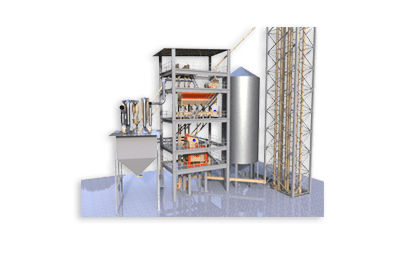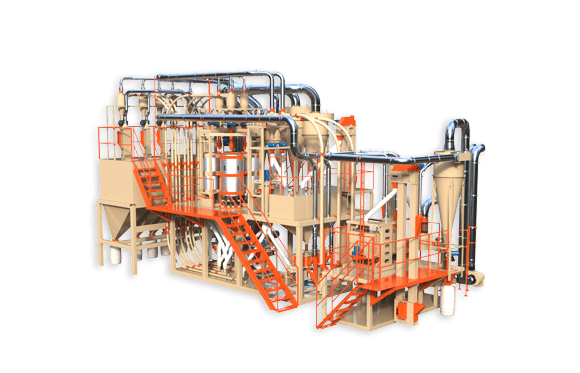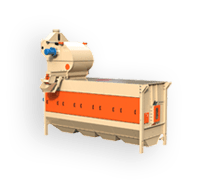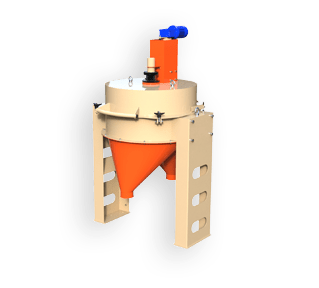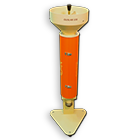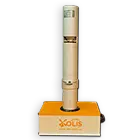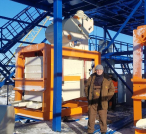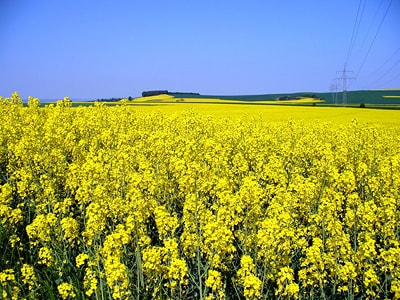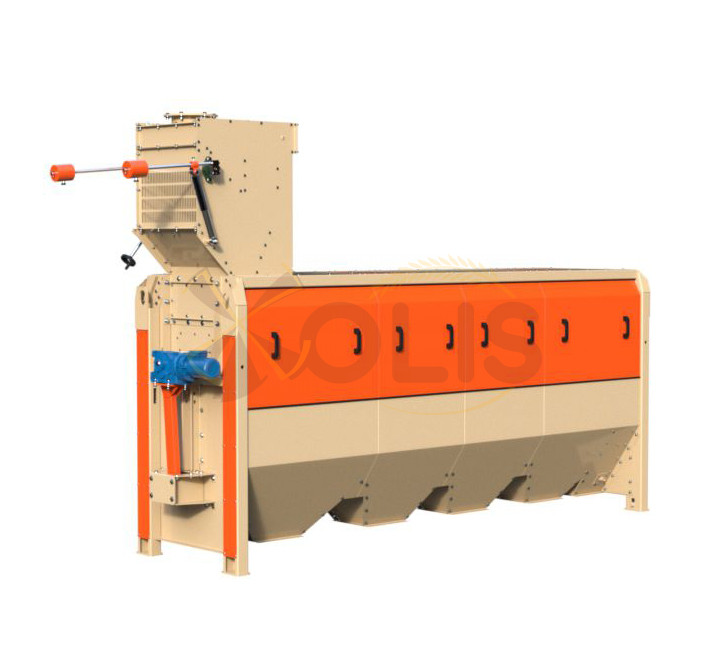Perhaps there is no other agricultural plant about which ordinary people know so little, but about which they say so many bad things. Rapeseed is a very interesting crop, very useful and widely used for technical and food purposes.
What is rapeseed?
Scientifically speaking, rapeseed is a herbaceous annual plant of the cruciferous family, of the cabbage genus. Its closest relatives are the wild grass colza and cultivated garden cabbage. Unlike them, rapeseed does not have a single wild ancestor. Scientists believe that this is a natural hybrid of the same rapeseed and cabbage, but at the same time it formed a full-fledged plant with a full set of parental chromosomes.
Thus, this plant should be talked about as an independent and full-fledged culture, capable of growth and reproduction. Rapeseed can be winter or spring. The roots of this plant are very powerful, they reach a depth of 2-3 meters, which ensures good vitality.
The outer part is also not small. The straight round stem has a height of one to two meters, and its thickness can reach 3 centimeters in diameter. Three types of rapeseed leaves grow on one trunk:
- basal rosette – lower ones, strongly indented, with a rounded top;
- medium – long, spear-shaped;
- the upper ones are lanceolate, sessile, and have an expanded base.
All leaves are covered with a special waxy coating; they are bluish or blue-green in color. Rapeseed blooms with very beautiful bright yellow flowers, forming a wonderful carpet in the fields, pleasing to the eye. When flowering ends, pods 10-12 cm long appear, containing many spherical hard seeds. There can be up to 30 of them in each pod, and they are very small in size – a thousand seeds weigh only 5-7 grams.
This is a fairly cold-resistant plant that does not require much heat even in summer. The main thing for him is a large amount of moisture, fertile soil and daylight. The longer the day in the places where it is grown, the higher the harvest will be.
The winter variety has a higher oil content in the seeds than the spring variety. But winter rapeseed does not like the continental winter climate, so in these countries it is better to plant a spring crop. Winter varieties produce excellent green mass very early (at a time when there are no other plants yet), and in terms of protein content it is comparable to alfalfa.
Spring varieties are called kolza. If you mow the green mass before flowering begins, the above-ground part remaining in the ground will quickly grow back and produce a new crop.
Grain equipment for rapeseed cleaning:
How is rapeseed grown?
The best soil for growing this crop is slightly acidic black soil. It is imperative to free the land from the remains of predecessor crops, and especially from weed seeds. It is advisable to carry out deep plowing.
After planting and emergence of seedlings, it is imperative to add the necessary mineral fertilizers and microelements:
- sulphur;
- magnesium;
- boron;
- manganese;
- molybdenum;
- copper;
- zinc;
- cobalt.
These fertilizers are vital for plant development and crop formation, and not all of them can come from the soil naturally.
Winter varieties are planted at the end of August – at this time the soil temperature is optimal in any case. By winter, the plant already has about 8 leaves and a fairly thick trunk, so it can easily withstand the cold. Well-fertilized loam and sandy loam soils are also suitable for planting. The plant does not like too high humidity.
Spring rape can be planted in early spring when the soil temperature is 5-7 degrees, and the planting time depends on the specific climatic conditions of the region. Seeds are usually planted at a depth of 2 cm, with a distance between rows of 15 cm. The approximate norm for rapeseed density is 120 plants per square meter.
Harvesting is carried out when the seeds are ripe: they must be ripe, humidity from 9 to 12%, and the pods must be yellow-green in color. It happens that plants in the same field ripen at different times. In this case, you have to use separate cleaning. Harvesting winter and spring varieties of rapeseed is practically the same in technology, only the timing of harvesting changes.
Rapeseed is a very popular crop, widely used in the food industry and in production. Therefore, more and more countries are growing this crop on agricultural land. Traditionally, the world leaders in growing this crop are Canada and China. But at the same time, other Asian countries, as well as Denmark, Germany, the Czech Republic and Russia, occupy a significant part of the crops. A large amount of rapeseed began to be grown in Ukraine.
What can rapeseed be used for?
The benefits of this culture are undoubted. It is widely used in many areas of industry and agriculture. All parts of the plant are used, this is practically a waste-free production. The main product obtained after pressing the seeds is rapeseed oil. After pressing, the cake is used to feed livestock. Green mass is also an excellent food, especially in early spring.
But the main product is rapeseed oil. It is widely used in a variety of fields:
- cooking;
- medicine;
- cosmetology;
- soap production;
- metallurgy (lubricants);
- textile industry;
- biofuel production.
At first, rapeseed oil was used only for technical purposes. Due to its high content of erucic acid and sulfur-containing substances, this oil had an unpleasant odor and could be harmful to health. But then work began on developing new varieties of rapeseed, the oil of which could be used in cooking.
Such varieties were obtained in the 1980s, and from that time a new stage in the cultivation of this crop began. Rapeseed oil of these varieties contained a safe amount of erucic acid for humans and had properties similar to olive oil:
- high transparency;
- the ability not to spoil for a long time;
- high content of oleic acid;
- presence of vitamin E;
- anticholesterol effect.
Rape oil is especially popular in northern countries with cold climates, such as Denmark or Canada. They produce several types of oil from this crop, including unrefined. At the same time, the prices for this product are quite affordable.
Rola oil is widely used in medicine and cosmetology. Many creams, lotions, and hair care products are made from it. It is very beneficial for the skin, and is also an ingredient in many types of soap.
Industrial rapeseed oil is widely used. It is used as a base for many lubricants because it is cheaper and better than traditional technical compounds. In addition, the environmental component is very important. Rapeseed products do not pollute the environment and do not create toxic waste.
Thanks to this most important quality, an environmentally friendly fuel based on rapeseed – biodiesel – was created. In addition to being environmentally friendly, such fuel is cheaper than usual (traditional fossil fuels are rising in price, they are becoming increasingly difficult to extract, and not all countries have their reserves).
Biodiesel engines and heating systems are increasingly being used. Every year, environmentally friendly and inexpensive biodiesel is increasingly used in different countries.
For additional information and advice, please call: ☎ +38 (067) 822-85-58.


